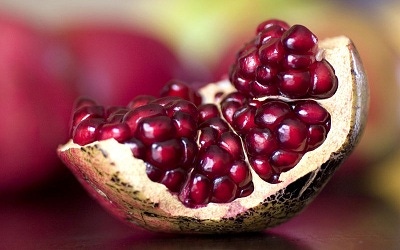Changing the conversation on health benefits
September 11, 2013

In 2008, Welch's launched a marketing campaign based on the polyphenols in grape juice. It did an admirable job of making a complex topic understandable and brought in pop food chemist Alton Brown to do the explaining. Unfortunately, it didn't last long; Alton shifted into speaking about the family-farmer-owned aspect of the product. Was it too early for the polyphenol message to really resonate?
Polyphenols, virtually unknown 10 years ago except to a handful of specialty scientists, are now growing into the consciousness of the industry like a slowly expanding helium balloon. It is clearing the eye levels of not only the industry, but also coming over the horizon for consumers. It's worthwhile to put some focus on how communications about polyphenols might be approached.
First of all, the basics. What are polyphenols? Like for many things in nature, chemical compounds have been placed into named groups to better understand them. Polyphenols can be called a "super group" of chemical compounds. At last count, more than 8,000 known natural polyphenols are on the planet, mostly made by plants. Generally, the common thread between different polyphenols is the presence of at least two phenol groups (look at those great hexagonal ring structures in the figure). Practically, polyphenols are responsible for a good portion of the colors, tangy flavors and health benefits we so covet in natural products.
Polyphenols include sub-groups that you've heard of, such as flavanoids (more than 4,000 of these), tannins, lignans and stilbenes (resveratrol, anyone?). Flavonoids are a particularly key sub-group for natural products; it is further divided into isoflavones, anthocyanins and catechins. Many of the plants and fruits that are standard fare in our industry contain combinations of these compounds as their main actives (e.g., pomegranate contains tannins and anthocyanins). Some are unique sources of certain natural products; for example, soy is a unique source of isoflavones, and pomegranate of punicalagin (the tannin thought to be responsible for its heart health benefits). Cranberries are a ready source of the unusual A-type proanthocyanidins. In some cases, it is the ratio and combination of the sub-group that makes the differencecocoa has epicatechin and catechin; green tea has epicatechin, catechin and epigallocatechingallate (better known as EGCG).
For a while, polyphenols were described interchangeably with the term antioxidants. It is true that many polyphenols have antioxidant properties; several illustrious members have been the stuff of the ORAC wars. However, as research has advanced, it has become clear that many polyphenols either do not act as antioxidants once they are in the body, do not find their way to the blood intact or at all, or if they do, their health benefits involve other mechanisms entirely.
What we are learning is that each polyphenol, while characteristic of its group and sub-group in its activity, has a behavior and benefit to the body all its own. Sometimes, it may indeed include an antioxidant aspect, but most of the time, the story is more than that.
This is the good news. Because as we flesh out more and more what each individual story is, we will have differentiators for the benefits our products provide that are much more sophisticated. While of late, articles are coming out questioning whether the time of the superfruit is fading into the sunset, I contend that it is only phase one of the superfruit story that is coming to a close. Phase two will focus on the unique properties and actions of each plant's polyphenols. The research horse is out of the barn, and while science takes time, we are already seeing how different ingredients affect genes, blood biochemistry, cellular processes, tissues and organ systemsthe structures and functions of the body.
We know a little about how to communicate about that. This evolution will only serve to raise the level of the products we are offering, the solidity of the stories behind them and the credibility of the industry as a whole, as we simultaneously improve the benefit to people's wellness.
Maybe the polyphenol message didn't resonate a few years back because it was just too general a concept for people to grab onto. But now the details are being filled in, and polyphenols can be branded, in a way, somewhat like the way the term "antioxidant" was. I don't mean that the term "polyphenols" should become the general replacement for antioxidant as a buzz word for "something-good-for-you-inside," but rather that it can become a framework for people's minds, to deepen their understanding of this large group of natural products, much the way people understand the group called vitamins, their individual members and their specific functions.
It will take some education effort on our part and learning effort on the consumer's part, but the proper climate has arrived. All around, they will be Good Feats (apologies Alton!).
Risa Schulman, Ph.D., is a functional food and dietary supplement expert, professional speaker and writer. She is president of Tap~Root, a consulting company focusing on health claim substantiation, product development and business strategy. Drawing on 15 years of experience on the leadership teams of companies such as POM Wonderful, Solgar Vitamins and Mars Botanical (a division of Mars Inc.), she assists prominent and pioneering food and dietary supplement companies, ingredient suppliers and companies shifting into these spaces with straddling the science-regulatory-marketing challenges of product development and launch.
You May Also Like




.png?width=800&auto=webp&quality=80&disable=upscale)